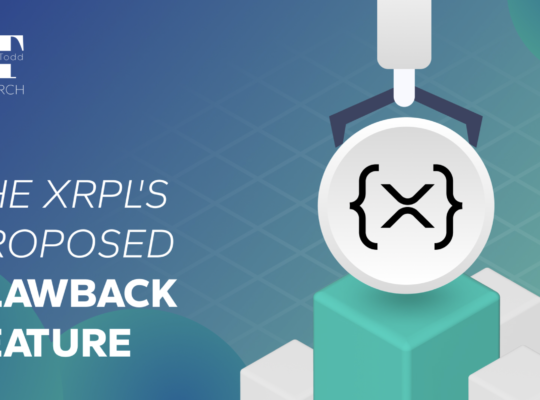Liquid Staking is key to driving more widespread industry adoption.

Many people whom I’ve met are familiar with the blockchain term staking, but only loosely and without much knowledge of its intricacies. Below I’ll be providing an overview of how staking actually works and its limitations, prior to discussing liquid staking and its critical role in the DeFi ecosystem. In turn, readers will understand how staking enhances network security, and why institutions are increasingly pursuing liquid staking as an alternative investment class.
It’s important to note that for simplicity’s sake I’ll primarily be focusing on the Ethereum network and therefore ETH, but other Proof-of-Stake blockchain networks rely on their native tokens for staking as well (e.g. SOL for Solana).
Introduction
Bitcoin relies on a Proof-of-Work consensus mechanism in order to maintain network integrity, whereas Proof-of-Stake (PoS) blockchain systems such as Ethereum work a bit differently. PoS blockchain systems incentivize honest behaviour by requiring parties to deposit large amounts of the network’s native token as collateral in order to become a validator. Validators store data, process transactions, and commit new blocks to the blockchain.
If they do the above correctly, they’ll be rewarded with more ETH which can basically be considered the network’s inflation level due to the supply of ETH increasing. However, if they mess up (on purpose, or by mistake due to something like a power outage), they’ll have a portion of their initial deposit (collateral) taken from them in a process known as slashing. By requiring validators to purchase a large amount of ETH and subsequently lock it up as collateral, validators are incentivized to see that the network succeeds as they’re rewarded in the process.
Validators are also randomly chosen with their probability of selection on a given block being proportionate to the amount that they’ve staked in the network. Those with more ETH staked are more likely to be chosen as validators, and yet more incentivized to see the network succeed.
More tokens staked in a given PoS network results in a higher cost to corrupt the network, and therefore greater security.
But it’s challenging for the average consumer to become a validator for several reasons:
- They must actually acquire 32 ETH, which is ~$40,000 as Nov 2022.
- They must operate complex hardware and software.
- Any mistake affecting their performance (e.g. a power outage) could incur a costly slashing penalty.
It’s therefore common that users delegate their stake to validators instead. This entails pooling together funds alongside others, and having someone be a validator on your behalf. They share validator rewards with you in proportion to your delegated stake (e.g. if you contributed 1 ETH out of their 32 ETH, you receive 1/32 of the rewards). While this requires paying them a commission for their service and having to trust that they won’t be subject to a slashing penalty, it also means that no minimum amount of ETH is required and that they’ll run the complicated pieces of technology on your behalf.
Why doesn’t everyone just stake if they get additional returns on their tokens?
Well, actually a lot of people do, and staking is extremely common. However, further adoption, especially with institutions, is limited by two major drawbacks:
- Assets are subject to a withdrawal period.
- Assets are locked up as collateral and therefore illiquid.
On Ethereum, one’s stake is not withdrawable until Ethereum’s Shanghai Upgrade is complete which is expected sometime in 2023. On Cosmos, it takes 21 days to withdraw one’s stake, and a similar period of time on other PoS blockchains. This limits institutions from strategic buying or selling and other treasury management activities, and can harm consumers who may be unable to quickly sell during volatile periods.
The typical reason for this delay on PoS blockchains is that it enables agreement on who is currently a validator. This prevents what’s known as long-range attacks, which are quite interesting but beyond the scope of this article as they quickly get complex.
While this withdrawal period can be reduced via clever technology, it’s ideal if users can simply keep assets staked yet have access to their funds.
Liquid Staking
It turns out that liquid staking solves this. It allows users to receive PoS staking rewards while providing liquidity of staked funds in order to enable users to simultaneously participate in DeFi for additional returns.
The way this works is that when users deposit their ETH onto a liquid staking DeFi protocol, they receive a “receipt” that’s redeemable for their underlying ETH. This receipt comes in the form of a token that’s compatible with the respective network, meaning it can then be used throughout the DeFi ecosystem. Because it’s redeemable for the underlying ETH, it holds intrinsic value and is a derivative.
Here are a few of the top Ethereum liquid staking projects:
- Lido: Users deposit ETH and receive stETH in return. Lido is the 2nd largest Ethereum DeFi protocol overall with a Total-Value-Locked (TVL) of $5.8B. They also operate on Solana, Polkadot, Kusama, and Polygon, though they are much more popular on Ethereum.
- Rocket Pool: Users receive rETH in return for their staked ETH. Rocket Pool has a TVL of $491.2M and only operates on Ethereum at the moment. One distinction from Lido is their method of selecting validators which is considered more decentralized.
- Stakewise: Users receive sETH2 for their ETH. Stakewise has $99.3M staked across Ethereum and Gnosis, and have some major partnerships such as with Blockdaemon.
Lido currently provides an APR of 8.2% on staked Ethereum, with this value accruing through the issuance of more stETH in one’s wallet. This APR fluctuates (it was recently 5.3%) and Lido takes a 10% fee.
Each protocol has their own methods for selecting top-tier validators to in turn minimize slashing risk for users. They may also have other methods to protect users, such as insurance funds.
There are other liquid staking solutions on Ethereum and you can find them by going to https://defillama.com/chain/Ethereum. Additionally, other blockchains have their own unique liquid staking solutions in turn.
How can stETH be used? Here are a few examples:
- By going to a decentralized exchange (DEX) such as UniSwap, users can swap their stETH for other tokens such as stablecoins or wrapped Bitcoin.
- One could become a liquidity provider for a DEX themselves, depositing stETH and another asset in order to receive fees from the protocol. For example, Uniswap charges 0.3% for users to swap, so the total fees from a given liquidity pool would be shared proportionally with a liquidity provider. If you contribute to an stETH/USDC pool, you’d receive fees from those who swap between the two assets.
- stETH can be used as collateral on a borrowing/lending protocol such as Aave. This could be used for purposes such as leveraged Ethereum staking, where one borrows ETH against their stETH, re-stakes on Lido for additional stETH, and repeats. However, this can be risky due to liquidation risks and may incur significant gas fees on Ethereum.
- stETH can be bridged to another network where it can be used in turn.
There are many other strategies as well, such as using MakerDAO to mint DAI stablecoins. At times, the stETH must be converted to wstETH for compatibility issues.
Institutional Adoption
An increasing amount of institutions are investing in the cryptocurrency space, with part of their investment funds being allocated into ETH tokens due to them being considered “blue chip” assets. From speaking with industry insiders, my understanding is that institutions are weary of staking due to illiquidity, and yet beginning to warm up to the idea of liquid staking.
The challenge is that it’s a cutting-edge solution with Lido only starting in December 2021. There need to be proper security measures in place, and institutions must be assured that there are no regulatory issues that they face.
One company helping to solve this is Blockdaemon who raised $207M in January 2022 as part of their Series C round. They focus on institutions by handling all legal compliance matters, using institutional-grade security partners for custoding funds, and making the whole process of liquid staking as seamless as possible for their clients. For example, liquid staking tokens are only allowed in permissioned DeFi protocols rather than permissionless DeFi protocols. This is a trade-off as it ensures legal compliance and yet limits where client funds may be invested. For example, Uniswap can be used by anyone (it’s permissionless) and does have any KYC processes, meaning that it may not be best suited for institutions that need to be fully compliant.
The recent events of FTX have no doubt hurt trust in the system and may impact institutional willingness to pursue blockchain investments, at least more clear regulation is established. However, it makes clear sense for institutions to pursue this alternative investment class for excess returns while maintaining liquidity of funds.
Conclusion
Above I explained how staking incentives honest behaviour and increases the cost of an attack on a network, in turn increasing network security. However, staking locks up funds which is a major obstacle for adoption.
Liquid staking is an alternative that enables one to benefit from staking while having full liquidity over their funds. Users are provided receipts in the form of network-compatible tokens, with these tokens having a value in themselves due to their ability to be redeemed for the underlying assets to which they correspond.
Liquid staking is quite new and yet has already become one of the top categories of decentralized finance. It’s key for increasing the willingness of parties to partake in staking and will help drive staking adoption for both consumers and institutions. Already, institutions are becoming more interested in liquid staking, although this may temporarily be harmed due to the events of FTX.
As always, please comment if I have not made something fully clear, as I can not only address it but it helps me learn moving forward.







1 Comment